Ultimate Guide to Annapurna Base Camp Trek
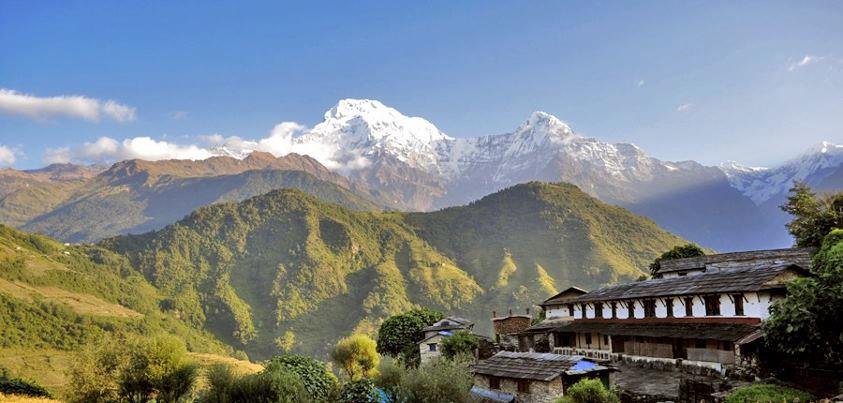
- 19-Mar-2017
- 0
In the case that you're in Nepal, it is probably a likelihood that you are here to do some trekking. With so many different trekking routes and destinations to choose no wonder it's going to be hard choosing a one trek worth your time. So on that occasion, let me tell you that there's no trek more stunning than the Annapurna Base Camp Trek that takes you up 4,130m (13,545ft.) and crosswise it covers about 80 km (~50 mi) of mountains and towns in a 16-day itinerary designed by us which starts in Tikhedhunga via Nayapul and finishes in scenic lake city of Pokhara. Over the past ten years, the popularity of this trek has risen incredibly making it a hot-spot for tourists from all over the globe. Nevertheless, I want to share some vital information which can make help your trek to Annapurna Base Camp a worthwhile venture. So without any further ado, let me point out the “Ultimate Guide to Annapurna Base Camp Trek”.
Name of villages and their elevations en route:
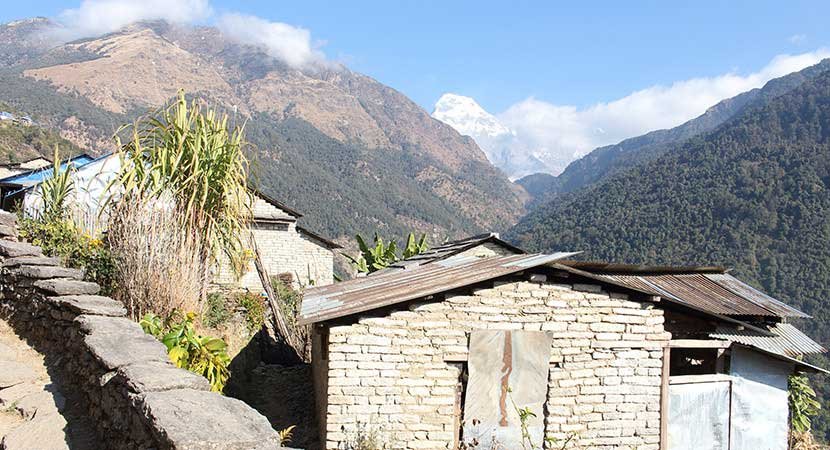
Firstly, you need to know where you are going and where you will spend the overnight during the trek. So below I have listed out the major villages with their elevations accordingly to make it easier for you to learn about where you are heading to.
| Nayapul (1020m/3346ft) | Tikhedhunga (1540m/5051ft) |
| Ghorepani (2860m/9380 ft.) | Poonhill (3210m/10531ft) |
| Tadapani (2,630m/8,626 ft.) | Chhomrong (2170m/7120ft) |
| Dovan (2600m/6190 ft.) | Deurali (3200m/10500ft) |
| Machapuchare Base Camp (3700m/12135ft) | Annapurna Base Camp (4130m/13545ft) |
| Bamboo (2310m/7576ft) | Jhinu Danda (1780m/5840ft) |
Best time for Annapurna Base Camp Trek:
A touch of informed knowledge can go far with regards to picking the best time to visit Nepal and trekking to the Annapurna Base Camp. While getting to the starting point of the trek doesn't require a stomach-stirring and weather supporting flight like the Everest Base Camp trek. Normally the dry season begins in October/November, making it one of the best time of year to do the trek in the midst of the scenes that is lavish and green from the current storms. Visibility is clear and you can get astonishing perspectives of the Himalayas all through your trek. Next best time is from February to April which revives the window for a more amenable trek before the rainstorm and warmth which hits in May.
Guide and Porter:
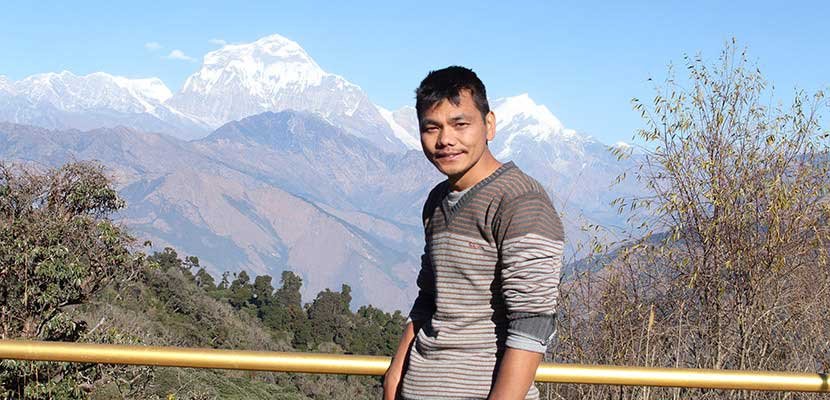
On the off chance that you stroll into one of the Tour Operators in Thamel, they'll likely disclose to you that having guide is a necessity for any trek that you may join upon & in addition you shall also presumably employ porters to carry your backpacks too. Keep in mind cuts and wounds are sufficiently simple to manage however would you be able to recognize the side effects of high altitude sickness which is a common issue faced during the trekking period. So for this precise reason having a guide can have enormous benefit in the event that you are trekking with an expert guide who can settle on the correct choices to descent down or call for a helicopter evacuation for you. And just to let you know, here at Icicles Adventure Treks, we also provide our clients with “Female Guides” but only for the Female Trekkers and Family Trekking Packages which we have included in our services. Alongside that we likewise provide you “Porters” who can carry your luggage amid the trek in order to make your journey more comfortable. This may appear to be extravagant, yet it might empower weaker trekkers to do the trek without carrying their 15-20 lb. pack.
What's the food like on the ABC trek?

During your trek you can get pretty much anything at a cost with a decent possibility of offerings contrasted with other trekking routes. “Dal Bhat” is the staple food available here but it can be changed to pasta, flapjacks and chopsuey accordingly to your taste buds. Trekking staples like Dal Bhat are filling, sound and loaded with great calories to keep you powered up for your trek. Treats like chocolate bars can be purchased up and down the ABC trek course. Do remember that you will consume a ton of calories and you should drink significantly more water while you trek through the immense changing terrains.
Types of Accommodation
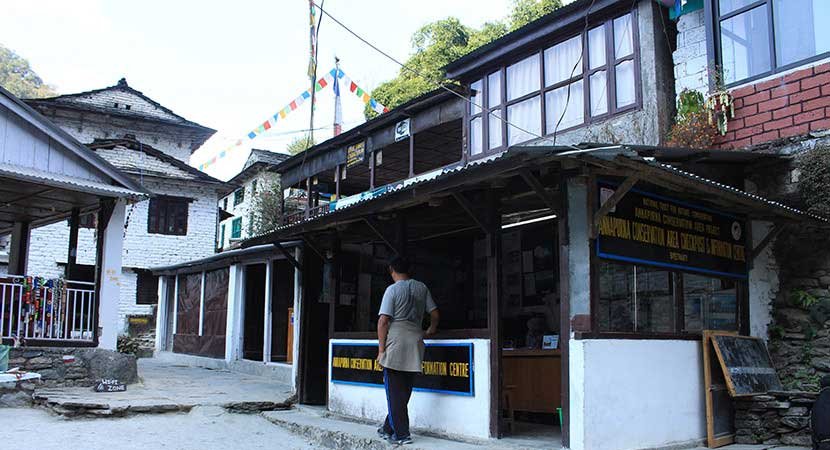
Being popular among trekkers has its own unique advantages as the ABC trekking route has many popular tea house to accommodate fellow trekkers. Having well-developed trails has made it easier for people to build proper facilitated Tea Houses and Lodges along the route. These tea houses are effectively sanitary and provide plain to standard amenities on a twin sharing basis. But if you are planning to trek here during the main peak seasons then it will be wise for me to say that you might need to sleep at the dining hall as all the rooms are bound to be packed with tourists/trekkers. Beside that the toilets are typically “squat style” outside the room which is rather contradictory for the people who are used to the modern style of European or Western Water Closet Toilet.
What to Pack:

You're going on a trek. You'll require some trekking gear. You can likewise do the entire thing with only some shorts, a tank beat, and a toothbrush however it may be somewhat awkward now and again. So to start off with your packing’s having a pleasant backpack is descent enough to let you carry the items necessary during your trek endeavor. At that point there's the trekking shoes, the trekking sticks, the trekking socks, the trekking beanie, a trekking shirt, a warmer trekking shirt. Fortunate for you, Thamel and Pokhara both have all the shops having all your needed trekking gears and equipment’s which you can purchase accordingly to your necessities.
Presently below are the pressing rundowns of things which you should possess for your trek:
Basic Trekking Gear List:
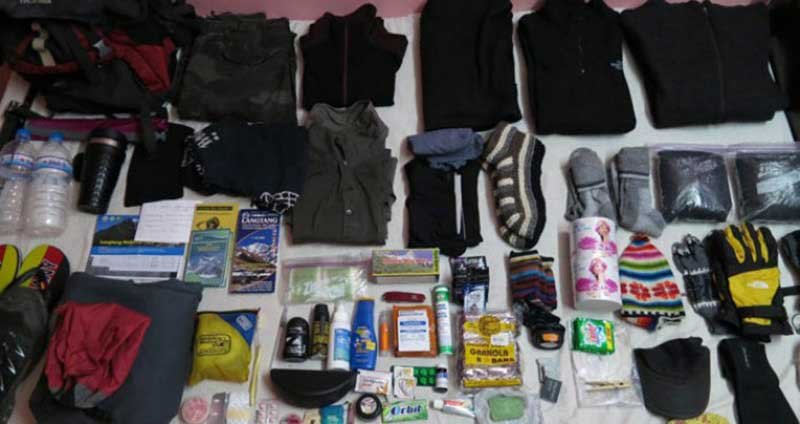
Trekking Shoes: Something agreeable, ideally softened up, with great hold and lower leg bolster. The landscape will extend from earth streets to rough snow-shrouded trails.
Socks: Moisture wicking socks will keep your feet dry and cheerful. Bring the same number of sets as you feel you require, yet you can likewise let some circulation into a couple while you wear another.
Shirts: Performance shirts are the approach here, unless you truly need to shake that most loved cotton shirt of yours. Temperatures will vacillate a considerable amount as you pick up height. The daytime can get very warm while you may request a moment cover around evening time. Layers are the approach. Short sleeves and long sleeves that you can add on or take off will spare you space and keep you cool and warm when you require it.
Shorts/Pants: If there's a period when it's fitting to wear those trekking pants with the hurdle off shorts, this is it. Two sets will be bounty.
Short/Long Underwear: Underwear is guaranteed; however long clothing will keep you warm as you get higher up.
Puffy Jacket/Rain Coverings: Your first line of security against the component. Compressible puffy coats are lightweight and keep you warm. A rain shell is discretionary, yet for how light it is, you should pack it in there in the event that it downpours. A junk pack will likewise work, but on the other hand it's a trash bag.
Backpack: Get one with a hip belt. It'll spare your shoulders over every one of those miles.
Beanie/Gloves: While it's a myth that you lose the majority of your warmth from your head, it's as yet pleasant to keep that noggin of yours warm. The same goes for those fingers.
Flip Flops/Sandals: To give your feet a break toward the day's end and ease the pressure on your feet’s after a long hard day of walking.
Sun glasses/Shades: Secure your eyes. Keep in mind that the snow will mirror the daylight, which can be very blinding amid the trek as you get closer to the base camp (mostly during the winter seasons).
Headlamp/Headlight: Let there be light so do consider bringing additional batteries. This will most likely spare you from spraining your lower legs while strolling around those uneven asphalt and trails during the evening. Or, on the other hand shield you from venturing into the squat latrine some time lately, or much more terrible, after you deal with your business.
Snacks: There are little shops in towns offering you those Oreos and chips, however this can comprise as you get closer and nearer to the base camp. Spare that cash to pay for some tea or the Tibetan bread. Go for calorie-pressed snacks with a little impression to spare space in your pack.
Trekking Poles: Mainly for extra solidness and support which might spare you from a stagger or two.
Book: You'll likely need to sleep or rest in the wake of a monotonous day's hike, yet a book is an incredible approach to relax when you're not offering stories to different trekkers at supper.
Music: While this is not mandatory, music can be very useful while you traverse past the lush forests of rhododendrons and make it easier for you to keep your mind amused during your endeavor.
The "Need to Have" Trekking Gear List
TIMS card: You'll require this before beginning your trek and to check in at all the security check points. For your kind information, TIMS card is pertinent in all trekking areas of the Nepal including the restricted areas. If you want to know more about TIMS Card, then you can go on their official site of http://www.timsnepal.com/.
Passport: As a traveler from a foreign nation one shall always keep their Passport safe and sound with them all the time. As your Passport is very vital in ensuring the complete success of your trek. Additionally, you also require your Passport to check in at the security check points.
Money/Cash: There aren't numerous ATMs en route. I propose around 1500-2000 rupees a day to cover every one of your lodging and sustenance and more for those fair on the off chance that minutes. As in, just in the event that you need additional celebratory brews or you tear your jeans and need to purchase another match en route.
Camera: If you are like every traveler who wants to capture those extraordinary moments. Then you should not be told to carry a camera. Unless you're an expert photographer, consider a simple to use with a greater sensor or one of the more up to date reflect less cameras that offer DSLR picture quality in a littler package. As of now GoPro is additionally an incredible choice.
Extra Batteries/Charger: You'll be on the go for at least 16 days, so bear in mind that you need to have original high quality chargers to make sure that your highly needed equipment’s are fully powered. Additionally, you can carry extra batteries just in case if you have no place to charge.
Universal Adapter: Unfortunately, Nepal doesn't have a standard connection. You'll locate only the two dimensional and three pronged attachments found in Europe and India, additionally discover North American attachments. So it is better to be readied.
Water Bottles/Iodine Pills/Electrolyte Tablets: Remember you can purchase water en route which can include a bottle of water costing around 200 rupees or less. In the event that you top off en route, treat your water with iodine pills. There are stations with safe drinking water too, yet it's not accessible at all around. Electrolyte tablets will reestablish some of that salt you're sweating without end. It'll likewise prove to be useful in the event that you get some offbeat solid discharges and lose a ton of fluid out of that flip side.
Toiletries: Bring your toothbrush, deodorants, toothpaste, antiperspirant and whatever else you may require like contact focal point arrangements.
To sum up, let me just say that it can be hard to plan a trek without having prior knowledge. But if you are keen to learn the basic requirements or the fundamental steps for any trek then you can surely be ready for everything that is in store for you which in turn can be a constructive factor for the success of your trek.




